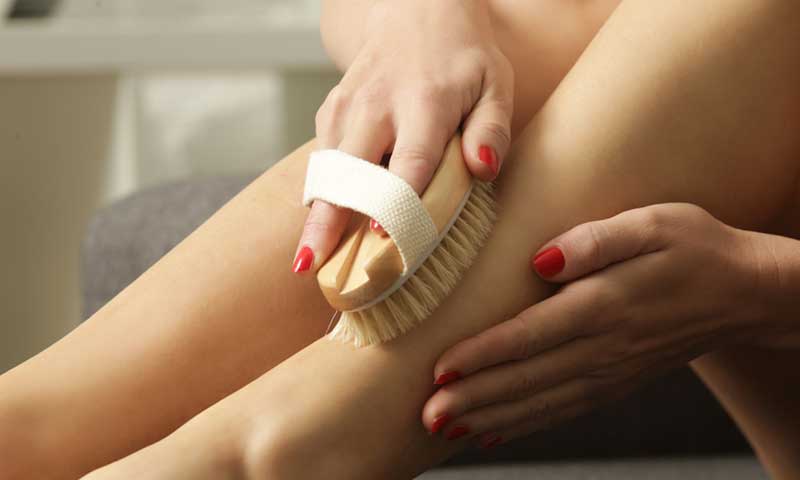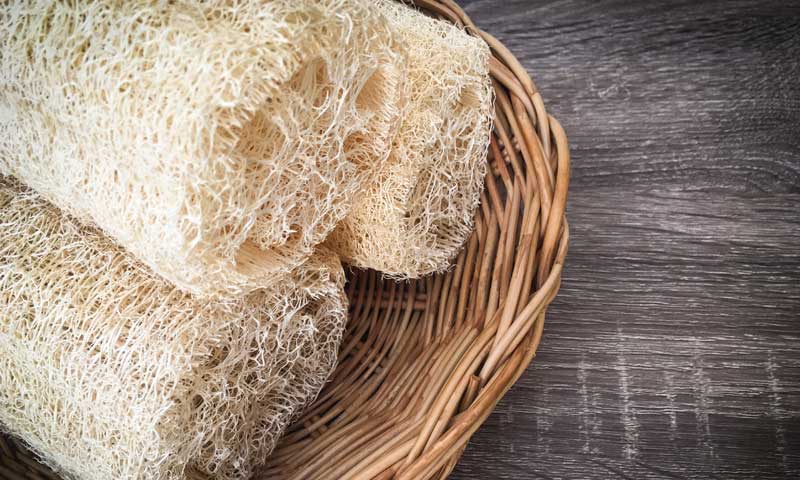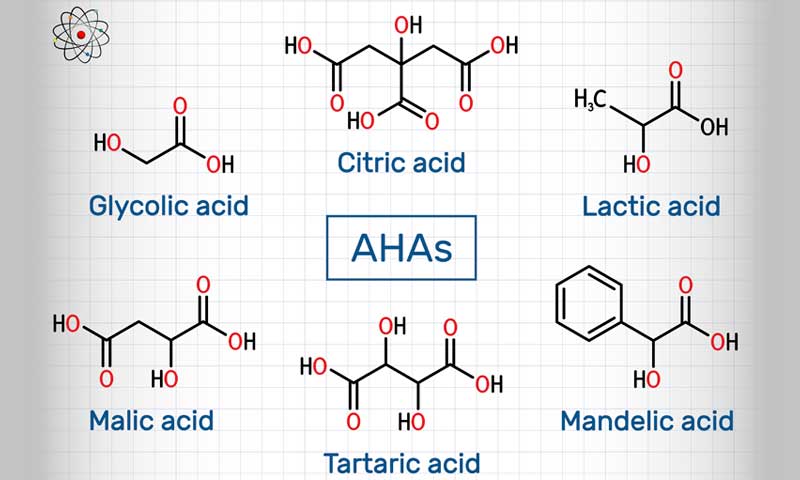Are you thinking about adding leg exfoliation to your beauty routine? If so, you’re on the right track. Leg exfoliation is an easy way to get softer, smoother, more attractive legs. But there are important things to know. Before you chose your exfoliation method, read our leg exfoliation pros and cons.
What is Exfoliation?
Exfoliation is the removal of the top layer of dead skin cells.
Our skin creates fresh skin cells monthly. But sometimes old skin cells remain, giving the skin a flaky, rough appearance. Exfoliation gently removes these dead cells. It also inspires new skin cell growth.

The Benefits of Exfoliation for Your Legs
Some benefits of exfoliation are legs that:
- Look softer, smoother, and more polished
- Look brighter
- Look younger
- Have improved circulation by bringing blood to the skin’s surface
- Can have a reduction in the appearance of cellulite
- Have increased collagen production over time
- Will better absorb skin moisturizers
- Develop fewer shaving-related ingrown hairs
Moisturizing Your Legs Isn’t Enough
Putting moisturizer or oils over dry, flaky skin won’t help much. That’s because these products can’t penetrate dry and scaly skin cells. Most of the moisturizer simply sits on top of the dry skin. This helps nothing. And you’re throwing money away.
But exfoliate your legs and watch them drink in the moisture.
Exfoliate Safely
Sometimes you can get too much of a good thing. Even drinking too much water each day can have a negative effect on your body. You don’t want to exfoliate every day. Your skin needs time to recover. Exfoliate at healthy intervals.
Your exfoliation products should work for your skin type. Is your skin dry, normal, or oily?
Then, be sure to apply moisturizer after exfoliation to avoid dryness or irritation. The best time to moisturize is just out of the shower when the skin is slightly damp.
Know Your Skin Type
If you exfoliate too harshly, or too often, for your skin type, your skin can become reddened or even damaged.
If your skin is sensitive, it may sting or burn after exfoliation. This is your skin’s way of telling you to be gentler.
If your skin is dry and flaky, you may be tempted to over exfoliate and irritate deeper layers of skin. When you exfoliate manually, use a gentle massaging touch—never scrub.
If your body is well hydrated, it will respond to exfoliation better.

Remember These Exfoliation Tips
- Never exfoliate right after shaving
- Don’t exfoliate over a sunburn
- Don’t exfoliate over an open cut or broken skin
- Do give special attention to knees and ankles
- Massage legs at the same time to improve circulation
Also, never exfoliate if you easily get dark spots on your skin from bug bites.
There are Two Types of Exfoliation
When you exfoliate your legs, you can use either a physical exfoliation method or chemical exfoliation.
Chemical exfoliation uses gentle acids or enzymes to dissolve the dead skin.
Know the pros and cons of each method to find which one works best for your skin.
Physical Exfoliation
Physical exfoliation uses a tool to remove dead skin cells. You can also use a mineral salt scrub.
Pros
- Works well for normal, thicker, more resilient skin
Cons
- Is rougher than chemical exfoliation because it involves gentle scrubbing
Four Tools Used for Physical Exfoliation
1. Loofahs
A natural loofah is a dried tropical gourd.
Pros
- Gently and effectively exfoliates dead skin
- Doesn’t irritate healthy skin
- Can buy in bulk and change frequently for safety
Cons
- Is a breeding ground for bacteria
- Can trap bacteria in pores during exfoliation
- Can be the source of infections
- Holds dead skin cells and old dirt and grime

2. Dry Brush Exfoliation
Includes use of a shower brush or natural bath bristle. Use it on dry skin. Brush skin upward toward the heart.
Pros
- Excellent for normal, non-sensitive, skin
- Provides a more rigorous exfoliation, if needed
- Can easily control exfoliation pressure
- Will increase circulation
Cons
- Even light pressure may be too harsh for sensitive skin
- Can cause irritation or bleeding if overused in certain area
3. Exfoliating Gloves
Pros
- Gentle on the skin with no redness or irritation
Cons
- If they develop an odor, you need a new pair
- Must wash out and let dry completely after each use
4. Mineral Salt Scrubs
First, rinse skin in warm water. Then apply scrub to legs by hand with a circular motion. Rinse off in a cool shower.
Pros
- Can use up to two times a week
- Exfoliates and cleanses
- Helps with skin circulation and detoxification
- Softens skin and improves hydration
Cons
- Can be irritating if done more than 2-3 times/week
- Does not moisturize the skin

Chemical Exfoliation
You can buy chemical exfoliants which are made of mild acids.
Different chemical exfoliants include:
- AHA acids like glycolic or lactic acids, derived from fruit, sugar or milk, are good for dry or sensitive skin; can use them every other week
- BHA acids, like salicylic acid, are good for oily, acne-prone skin
- Extremely mild enzyme-based acids are derived from fruits
Pros
- Gentler than physical exfoliation
- Good for sensitive or skin
- Can use with a gentle washcloth
- Does not involve scrubbing
- Can moisturize skin and will not over-dry it
- Can help prevent ingrown hairs
Cons
- It’s important to follow label directions to avoid irritation or dark spots
Look for Spider Veins on Your Legs
Now that you’re focusing on making your legs more beautiful, take time out to look for spider veins.
Spider veins appear near the surface of the skin. They usually appear as thin red, blue, or purple lines on the ankles, thighs, or calf.
They rarely cause any health problems, but they are unsightly.
You cannot remove spider veins with exfoliation, but they can be removed with sclerotherapy. Sclerotherapy is a minimally invasive procedure that requires no anesthesia.
And you can usually exfoliate your legs once the injection site has fully healed.
Contact us at NJVVC for more information.
You may also like, “Spider Veins on Ankles and How to Treat Them.”


